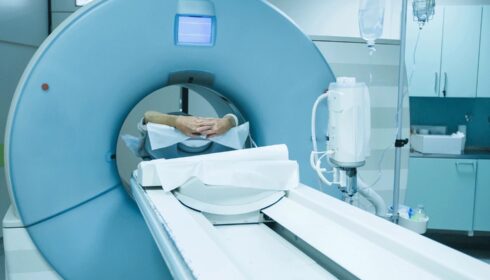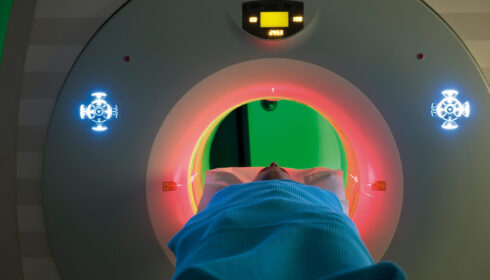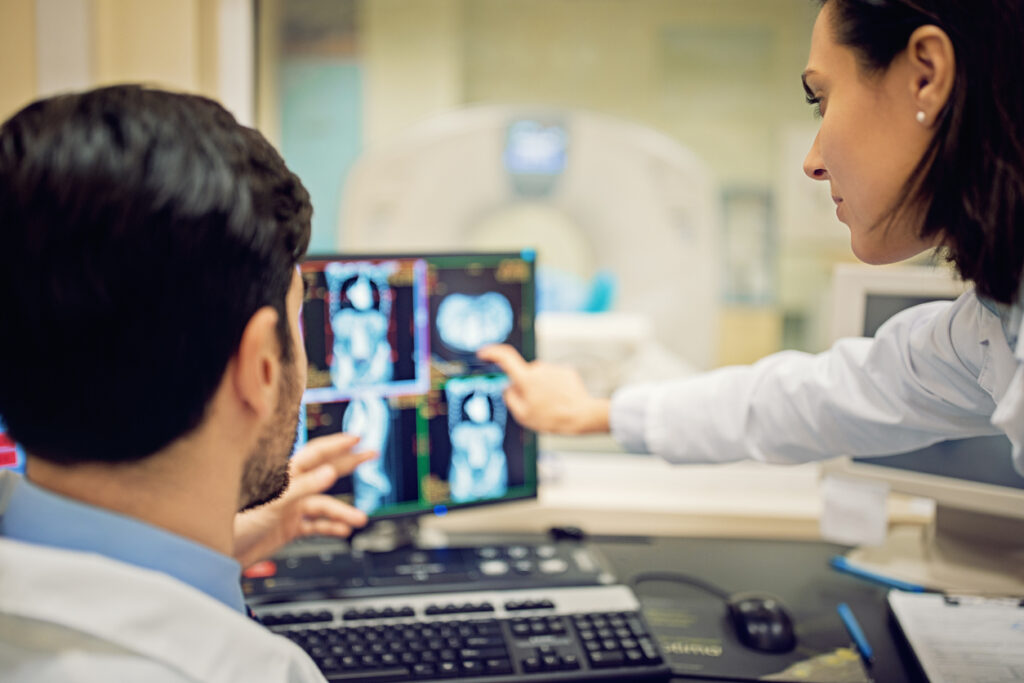
Isotopes
Nuclear physicians use radioactive material to determine whether organs are functioning properly and to detect cancerous tumors at an early stage. Medical isotopes emit radiation that is used to make diagnoses, such as by administering it to patients undergoing PET or SPECT scans. It is vital that a correct diagnosis be made so that the right treatment for the patient can be determined. In addition, therapeutic isotopes are used to treat cancer patients, such as in radiation or brachytherapy. In this therapy, the isotope is inserted to attack malignant cells internally.
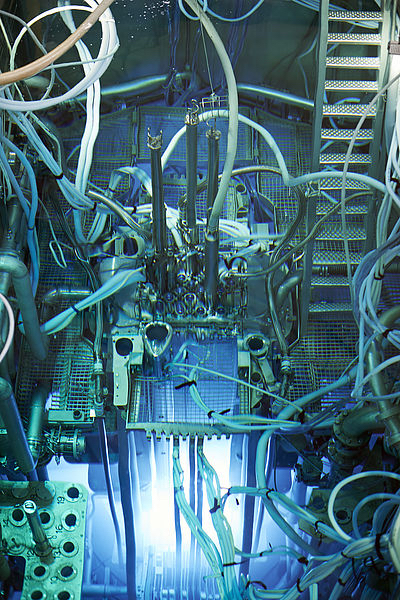
High Flux Reactor in Petten
Isotopes are made in the Nuclear Research and consultancy Group’s (NRG) High Flux Reactor, among other places. This reactor has a power of 45 million watts. This power is used to collide neutrons and raw materials. This happens in the core of the reactor. This is located in a water-filled basin about 9 meters deep, with thick concrete walls. Placing raw materials in the core at the bottom of the water basin exposes them to the neutrons and creates isotopes. The water layer serves to shield the radiation released by the process. The water is colored blue because the charged particles move through the water at very high speed. The HFR will be replaced by the PALLAS reactor around 2025.
Photo credit: NRG
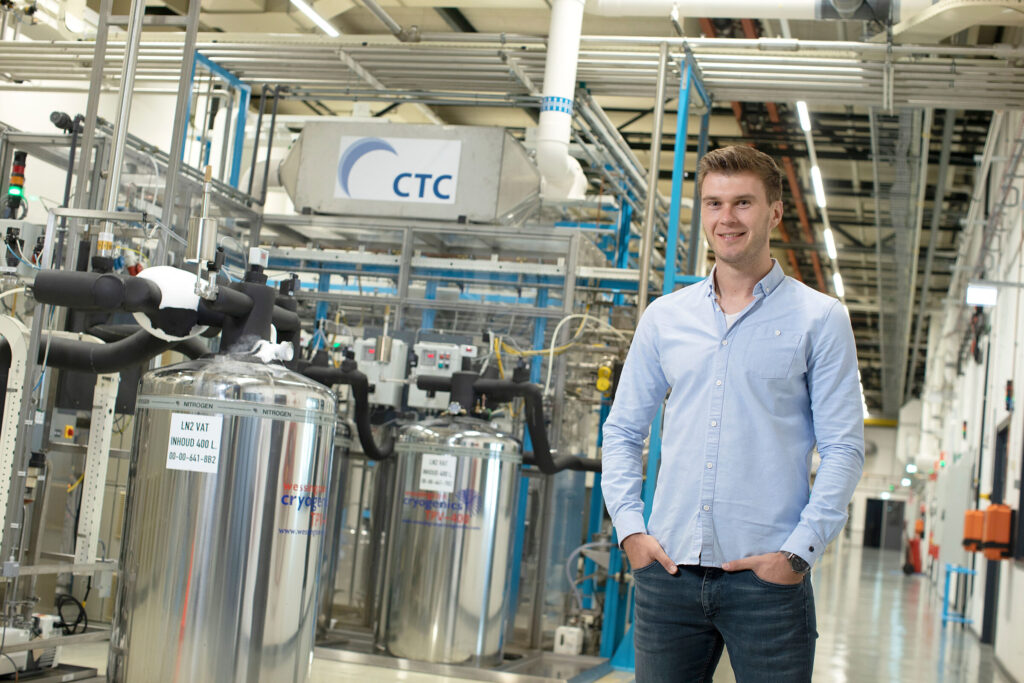
Stable isotopes
Urenco Stable Isotopes uses expertise in centrifuge technology to enrich and degrade products for a wide range of markets and customers. Each year, more than 2 million patient treatments are performed with nuclear drugs produced with Urenco’s stable isotopes. In 2021, they opened their Leonardo da Vinci cascade for the production of stable isotopes. Like the inventor after whom the facility is named, who lived from 1452 to 1519, this cascade is extremely versatile. It is designed for the enrichment of multiple isotopes – including cadmium, germanium, iridium, molybdenum, selenium, tellurium, titanium, tungsten, xenon and zinc – for medical, industrial and research applications. Urenco Stable Isotopes is also researching solutions for cancer treatment.
Photo credit: Urenco
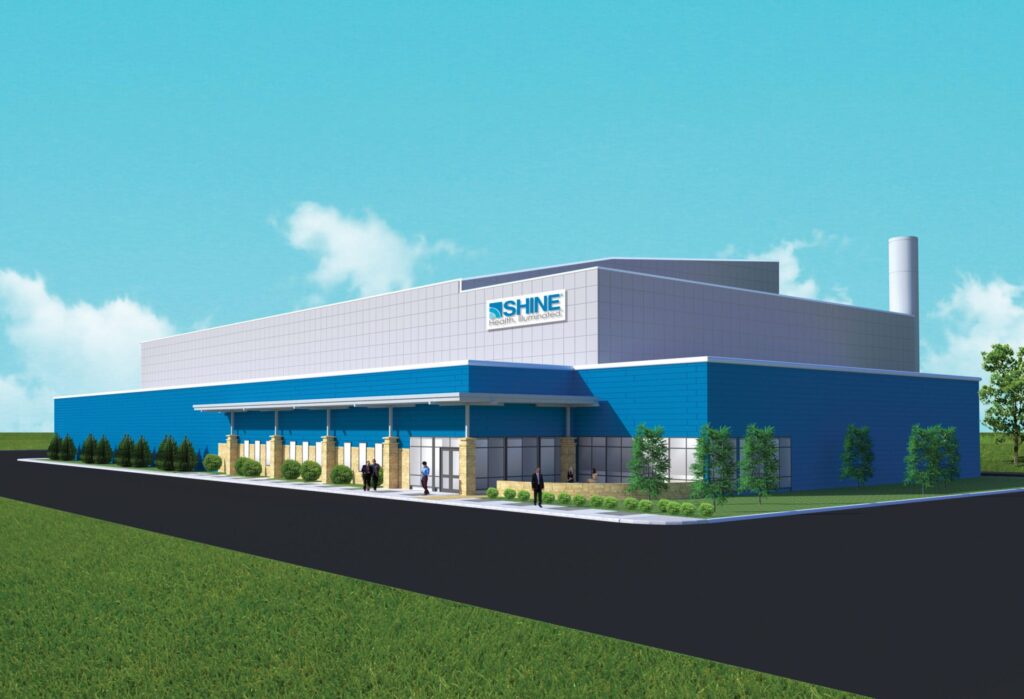
SHINE's innovative fusion system
The medical company SHINE wants to build a nuclear facility – a plant for medical isotopes – in Veendam, Groningen. SHINE designs, manufactures and operates innovative fusion systems for short-term applications, such as the production of medical isotopes. Currently, most medical isotopes are produced in six research reactors. With its innovative fusion technology, SHINE aims to strengthen the efficiency of the supply chain and thereby ensure the security of supply of key medical isotopes. SHINE fusion technology is designed to produce both therapeutic and diagnostic medical isotopes without research reactors or highly enriched uranium.
In the United States, SHINE is already producing lutetium-177 on a commercial scale. This is a medical isotope used to treat prostate cancer, as well as neuroendocrine tumors. SHINE uses its innovative accelerator technology for this purpose. SHINE Europe will apply the knowledge gained in the U.S. in Veendam and start building a similar production facility for lutetium-177 as soon as possible. In addition, SHINE Europe has announced plans to build a plant in Veendam for the production of molybdenum-99, used for cancer diagnosis.

